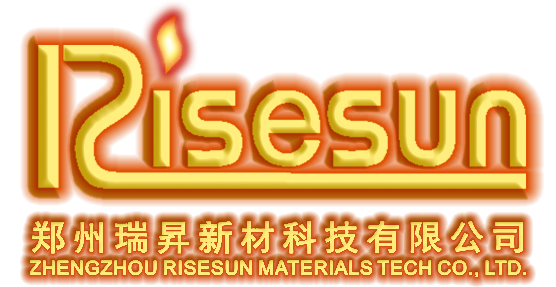22
2025
-
08
Why MoSi2 Heating Elements are Essential for Efficient Heating Solutions
Introduction to MoSi2 Heating Elements In recent years, the demand for efficient heating solutions has surged across multiple industries, making **MoSi2 heating elements** a pivotal component in various applications. These elements, primarily made from **molybdenum disilicide**, are renowned for their exceptional thermal resistance, durability, and ability to operate in high-temperature environm
Introduction to MoSi2 Heating Elements
In recent years, the demand for efficient heating solutions has surged across multiple industries, making **MoSi2 heating elements** a pivotal component in various applications. These elements, primarily made from **molybdenum disilicide**, are renowned for their exceptional thermal resistance, durability, and ability to operate in high-temperature environments. This article delves into the significance of MoSi2 heating elements, exploring their characteristics, advantages, and applications, while also addressing common questions related to their use.
Understanding MoSi2 Heating Elements
MoSi2 heating elements are a type of resistive heating element that operates by converting electrical energy into thermal energy through resistance. The unique composition of **molybdenum disilicide** allows these elements to withstand high temperatures, making them suitable for various heating applications. Their operation is based on the principle of Joule heating, where the element heats up as electrical current passes through it.
The Composition of MoSi2 Heating Elements
The core material of MoSi2 heating elements is molybdenum disilicide. This compound possesses outstanding thermal properties, allowing it to operate at temperatures exceeding 1600°C (2912°F) without significant degradation. Additionally, MoSi2 is known for its excellent oxidation resistance, which enhances the longevity of the heating elements even in harsh environments.
Types of MoSi2 Heating Elements
MoSi2 heating elements can be categorized based on their design and application. Some common types include:
- **Straight Elements:** Typically used in furnace applications, these elements have a straightforward construction that allows for easy installation and maintenance.
- **Coiled Elements:** Designed for applications requiring more flexibility, coiled elements can be bent and shaped to fit specific heating requirements.
- **Screw Elements:** Often utilized in industrial processes, screw elements allow for secure attachment to heating fixtures, ensuring consistent performance.
The Advantages of MoSi2 Heating Elements
MoSi2 heating elements offer several advantages over traditional heating solutions, making them a preferred choice in various applications.
High-Temperature Resistance
One of the most significant benefits of MoSi2 heating elements is their ability to operate efficiently at high temperatures. These elements maintain their structural integrity at temperatures well above 1600°C (2912°F), making them suitable for use in kilns, furnaces, and other high-temperature environments.
Excellent Oxidation Resistance
MoSi2's unique properties provide outstanding resistance to oxidation, enabling these heating elements to function effectively even in oxidizing atmospheres. This characteristic is crucial for applications that involve exposure to gases that could degrade other materials.
Longevity and Durability
When compared to other heating elements, MoSi2 heating elements exhibit an extended lifespan. Their ability to withstand high temperatures and resist oxidation translates to reduced maintenance costs and downtime, significantly enhancing operational efficiency.
Energy Efficiency
MoSi2 heating elements are designed for optimal energy use, minimizing waste and maximizing output. Their efficient operation leads to lower energy bills and a reduced carbon footprint, aligning with global sustainability efforts.
Versatile Applications
The versatility of MoSi2 heating elements allows them to be utilized across various industries, from ceramics and metallurgy to food processing and semiconductor manufacturing. Their adaptability ensures that they can meet the heating requirements of different processes effectively.
Applications of MoSi2 Heating Elements
MoSi2 heating elements find applications in numerous industries. Here are some noteworthy examples:
Ceramics and Glass Manufacturing
In the ceramics and glass industries, MoSi2 heating elements are commonly used in kilns for firing and sintering processes. Their high-temperature resistance and reliability make them ideal for achieving the necessary thermal profiles during production.
Metallurgy
MoSi2 heating elements are often employed in metallurgical applications, such as heat treatment and materials testing. Their ability to provide consistent heating is crucial in achieving desired material properties and ensuring product quality.
Food Processing
In the food industry, MoSi2 heating elements are used in ovens and other cooking equipment. Their energy efficiency and durability ensure that food processing operations can run smoothly without interruptions.
Semiconductor Manufacturing
The semiconductor industry utilizes MoSi2 heating elements in various production processes, including wafer processing and testing. The elements' ability to maintain high temperatures helps ensure the quality and reliability of semiconductor products.
FAQs About MoSi2 Heating Elements
1. What makes MoSi2 heating elements different from other heating elements?
MoSi2 heating elements are distinguished by their high-temperature resistance, oxidation resistance, and longevity, which set them apart from traditional heating elements made of materials like nickel or silicon carbide.
2. How does temperature affect the performance of MoSi2 heating elements?
As the operating temperature increases, the performance of MoSi2 heating elements remains stable up to their maximum rated temperatures, generally around 1600°C (2912°F). Beyond this threshold, performance may degrade, emphasizing the need for proper temperature management.
3. Can MoSi2 heating elements be used in oxidizing atmospheres?
Yes, one of the significant advantages of MoSi2 heating elements is their excellent oxidation resistance, enabling safe operation in oxidizing atmospheres without rapid degradation.
4. How long do MoSi2 heating elements typically last?
The lifespan of MoSi2 heating elements can vary based on application and operating conditions, but they generally offer a longer service life compared to conventional heating elements, often exceeding several thousand hours of operation.
5. Are MoSi2 heating elements easy to install and replace?
MoSi2 heating elements are designed for user-friendly installation and replacement. Straight and screw elements, in particular, provide straightforward, secure attachment options that simplify maintenance.
Conclusion
MoSi2 heating elements are essential components in modern heating solutions, providing high-temperature resistance, oxidation resistance, and durability across various applications. Their versatility makes them suitable for industries ranging from ceramics and metallurgy to food processing and semiconductor manufacturing. As the demand for efficient and reliable heating solutions continues to grow, MoSi2 heating elements will undoubtedly remain at the forefront of technological advancements in the heating sector, making them an indispensable asset for any industry that relies on high-temperature processes. Investing in MoSi2 heating elements is not just a choice for today; it is a commitment to an efficient and sustainable future.



